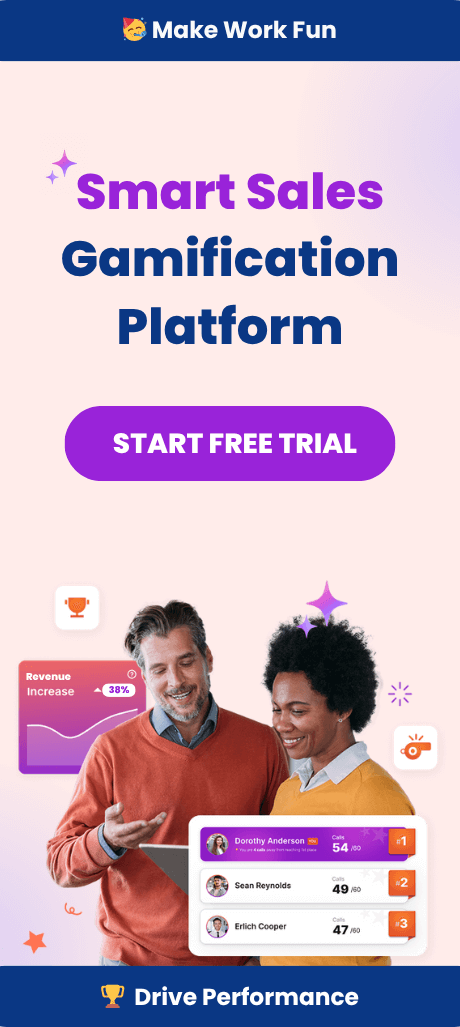Setting the Stage: Company Culture in a Changing World

Over the past decade, executives have seen the contours of company culture shift seismically. Hybrid work models, rapidly evolving technologies and generational preferences reshaped how teams connect and align. Yet, amid these changes, the fundamentals remain: culture sets the tone for organizational resilience, retention and growth. Leaders know that a strong culture is no luxury. It’s a strategic imperative, fueling everything from daily engagement to high-stakes innovation.
But for many, cultivating that culture is no easy task. Traditional engagement methods, one-off recognition programs and quarterly surveys often fail to bridge the gap between leadership intent and employee experience. As workplace expectations climb, so does the demand for more meaningful, interactive approaches. This is where gamification enters, not as a gimmick, but as a force that can harmonize, motivate and connect teams in fresh, deliberate ways.
The Link Between Engagement and Culture: Why It Matters
High-performing organizations display a simple truth: engaged employees build thriving cultures. According to Gallup, businesses with strong engagement see markedly higher productivity and retention rates. Engagement, however, isn’t driven solely by compensation or benefits. A more persistent driver is emotional resonance — when employees feel recognized, challenged and connected to shared goals.
Gamification amplifies this sense of resonance. By integrating game-inspired elements — achievements, points, leaderboards — into everyday work, companies can set clear expectations, promote friendly competition and celebrate both individual and team successes. This cultivates an environment where purpose and fun are not mutually exclusive, but mutually reinforcing. For example, frameworks illustrated in What Defines a Thriving Company Culture in 2025 reinforce the impact of engagement on results.
The Fundamentals of Gamification in the Workplace
Gamification is commonly misunderstood as simple games or recreational activities peppered into the workplace. In reality, its power lies in framing core tasks through new motivational lenses. The right application can shift culture by consistently reinforcing desired behaviors and outcomes. While the concept spans decades, today’s technologies propel it further: digital leaderboards, automated rewards and real-time feedback loops are often just a click away.
Consider how sales organizations use gamification software to drive sales KPIs. The mechanics are universal — track progress, reward milestones, and build a visible sense of achievement. Gamification’s efficacy is grounded in behavioral psychology — consistent reinforcement, clear goals and social recognition feed intrinsic motivation at scale.
Gamification for Company Culture: Strategic Rationale
Why has gamification become a preferred strategy for progressive company cultures? The answer is as much about competitive talent markets as it is about internal alignment. Leaders are recognizing that top talent expects more than static recognition walls or periodic bonuses. They crave real-time feedback, purpose-driven challenges and transparent celebration of progress.
For executives, embedding gamification into culture means transforming engagement from a static HR function to a living system. Gamification systems enable visibility — not just into who’s winning contests, but who’s making incremental progress, offering new ideas or supporting colleagues. This transparency builds trust and signals that growth and contribution are valued at every level.
Key Elements of Effective Employee Gamification

To harness gamification’s potential, a deliberate approach is vital. The most successful programs share a few common threads:
- Clarity of Objectives: Gamified initiatives must be linked to real, measurable business outcomes, not just superficial engagement metrics.
- Customization: No two teams are alike. Options for a customizable leaderboard or recognitions tailored by department fuel relevance and buy-in.
- Accessibility: Gamified tools should be simple to access and use — whether an employee is remote, hybrid or in-office.
Leaders should seek platforms that offer robust employee gamification tools, as discussed in Engagement Tools Every Team Needs to Thrive, ensuring seamless integration with existing workflows, communication channels and analytics platforms.
Selecting the Right Gamification Platform
Choosing a gamification solution is a strategic investment, not merely a technology procurement decision. Executives should prioritize platforms that blend ease-of-use with enterprise-grade security and customization. Relevant keywords for these searches include best gamification platform, employee gamification software and gamification in the workplace. The platform must support personalization, scalability and integrations with HRIS or CRM systems.
Before committing, pilot programs and stakeholder alignment are essential. Leaders should involve cross-functional voices to surface requirements and anticipate roadblocks. For example, integrating a digital leaderboard across sales and customer success may have different implications than a rewards system for R&D teams.
Pitfalls to Avoid in Gamifying Company Culture

Not all gamification efforts yield results — and, when mishandled, they can even erode trust. The biggest missteps often stem from one-size-fits-all approaches and tokenized rewards. Leaders must avoid:
- Over-emphasizing competition at the expense of collaboration, which can create internal silos or exclusion.
- Using arbitrary rewards that feel disconnected from genuine achievement or company values.
- Failing to refresh challenges and recognitions, leading to stagnation and declining engagement.
Instead, the focus should remain on reinforcing core values, transparency and inclusivity. Empirical evidence underscores that gamification is most effective when paired with authentic communication and long-term development pathways.
Gamification and Employee Recognition: A Powerful Synergy
Recognition is the lynchpin of employee motivation. Rather than isolated shout-outs, gamified recognition turns acknowledgement into a daily, lived experience. For instance, using leaderboards or automated badges, employees receive immediate feedback and public praise, which has a compounding effect on morale. In rapidly growing organizations, automated recognition ensures that even as teams scale, no contribution goes unnoticed.
For a deeper look at the science behind recognition, review The Impact of Employee Recognition on Retention and Productivity.
Designing Gamified Initiatives that Build Loyalty
To build a sense of true community, gamified initiatives should extend beyond purely performance-based rewards. For instance, peer-to-peer recognition badges, ideation challenges and cross-team competitions can build horizontal loyalty and trust. Executives should consider how digital leaderboards and gamified feedback mechanisms can create new rituals of celebration and mentorship within teams.
- Peer-to-peer feedback programs: Encourage real-time endorsements for knowledge-sharing or lived company values.
- Cross-departmental challenges: Foster collaboration and break down silos with shared goals.
- Continuous learning competitions: Promote upskilling culture by gamifying professional development milestones.
Ultimately, these efforts foster a sense of pride and belonging, underscoring that every contribution matters in shaping culture.
Real-World Outcomes: Measuring the Cultural Impact of Gamification
Leading organizations track the real value of gamification through both quantitative and qualitative metrics. These might include improved employee engagement scores, reduced voluntary attrition and increased productivity. However, the most telling indicators often emerge from changes in trust, feedback cycles and day-to-day energy.
Leaders should look beyond immediate leaderboard successes and study how gamification transforms communication, creative risk-taking and shared resilience over quarters. Regular pulse surveys and sentiment analysis can bring deeper cultural insights than annual reviews alone, making it easier to pivot gamified strategies over time.
Strategic Steps for Executives Ready to Act
Executive sponsors play a pivotal role in modeling the behaviors they hope to spark with gamification. Culture change starts with visible commitment: when leaders use and promote gamified tools, engagement gains authenticity. Steps to consider include:
- Identify a clear vision for the connection between culture and business performance.
- Select flexible, data-rich gamification software that aligns with broader digital transformation objectives.
- Involve people at every level in designing, piloting and iterating initiatives for faster adoption and continuous learning.
While results won’t appear overnight, consistent, transparent effort yields accelerating returns as new rituals of recognition and accountability take root.
Looking Ahead: The Future of Gamification and Company Culture
The rise of AI, analytics and real-time feedback will further accelerate the sophistication of gamification. Next-generation solutions will personalize motivation strategies, rewarding not just output but also collaboration, innovation and resilience. Firms prepared to invest now in gamified platforms are best positioned to retain talent and fuel engagement as generational dynamics and tech expectations continue to shift.
For forward-thinking organizations, the challenge is to weave gamification responsibly into the fabric of their culture — to craft a climate where achievement, recognition and fun flourish side by side. Ultimately, gamification is most powerful when it empowers every employee, from the quietest contributor to the boldest leader, to take pride in shaping an enduring, positive company legacy.
For those ready to explore the right solution, consider booking a demo of Spinify to see how customized leaderboards and recognition systems can elevate your organization’s culture. Or, start your journey with a free trial to test which features inspire your team most. Company culture is no longer static — and gamification is proving to be one of its most dynamic drivers.



